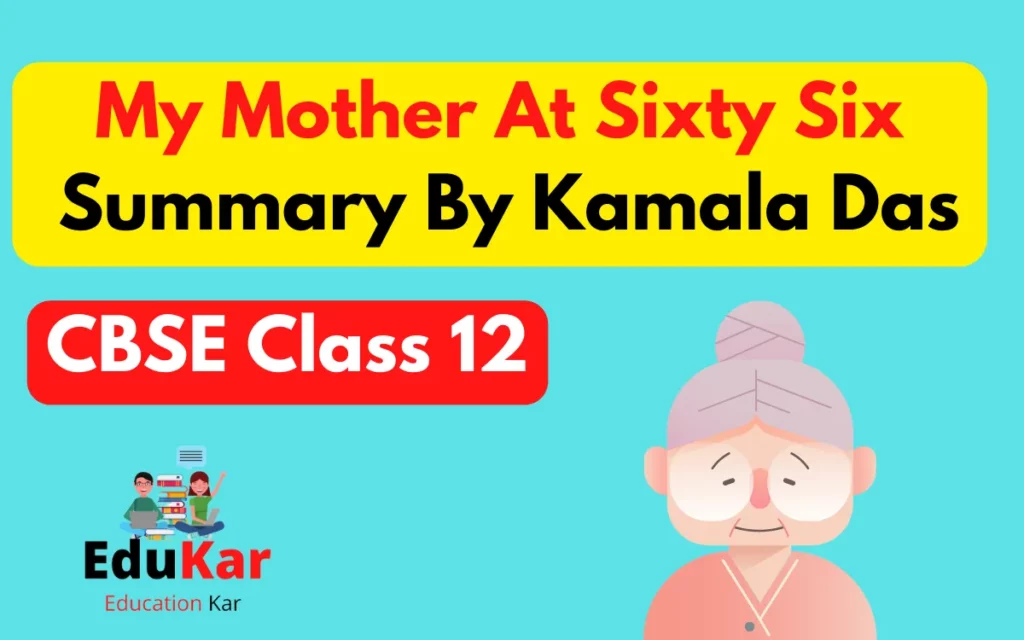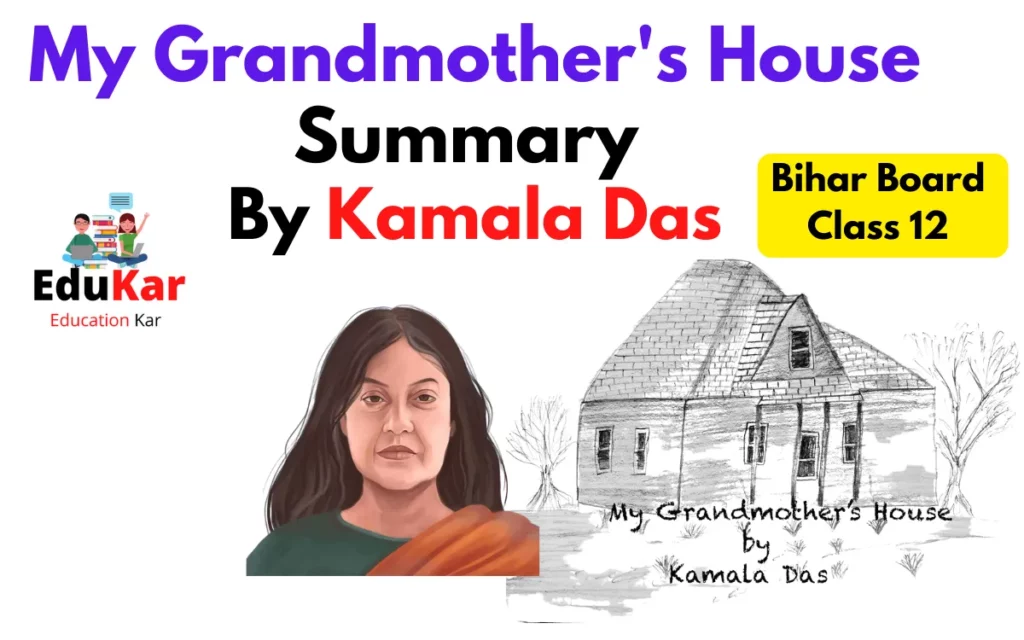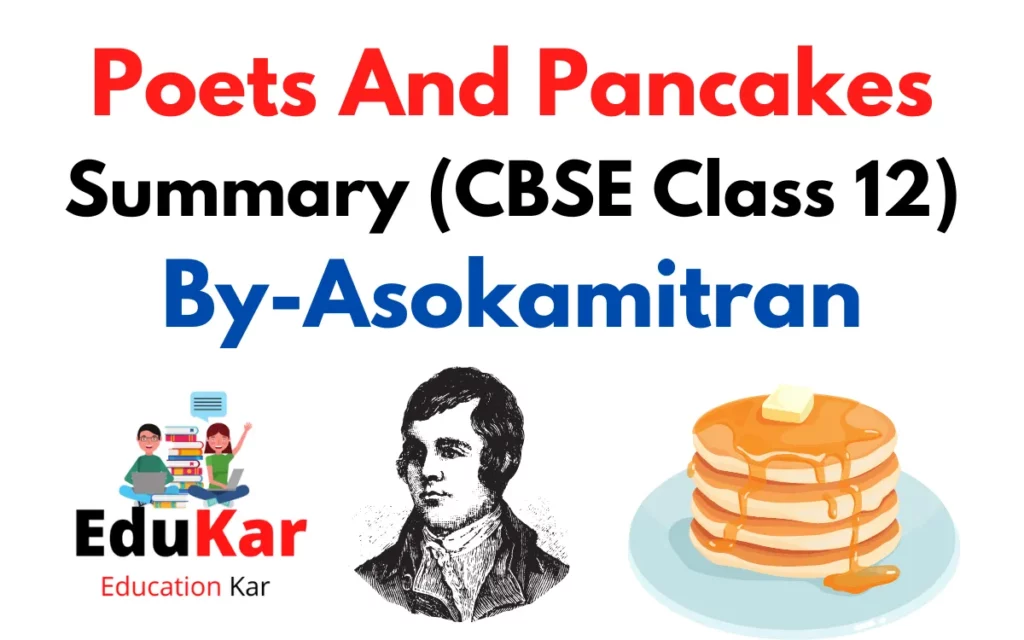
Q1 : Who is the writer of lost spring?
(a) Arundhati Roy
(b) Anees Jung
(c) James Bond
(d) Sudha Murthy
Answer: (b) Anees Jung
Q2 : What does the author analyze in the story?
(a) Her works
(b) Rich people
(c) Poor children and their exploitation
(d) Garbage
Answer: (c) Poor children and their exploitation
Q3 : This story is an excerpt from which book of the writer?
(a) Breaking the silence
(b) Lost spring-stories of stolen childhood
(c) The song of India
(d) Unveiling India
Answer: (b) Lost spring-stories of stolen childhood
Q4 : What forces the children to live a life of exploitation?
(a) Parents
(b) Greed
(c) Extreme poverty
(d) Peers
Answer: (c) Extreme poverty
Q5 : What is the focused theme of the story Lost Spring?
(a) Saheb and Mukesh
(b) Garbage
(c) Pitiable poor children and their lost childhood
(d) Spring Season
Answer: (c) Pitiable poor children and their lost childhood
Q6 : According to the writer what was garbage for the parents?
(a) Means of survival
(b) Means of entertainment
(c) Means of Sorrow
(d) Means of joy
Answer: (a) Means of survival
Q7 : Who was Saheb?
(a) a ragpicker
(b) a shopkeeper
(c) a servant
(d) All of these
Answer: (a) a ragpicker
Q8 : According to the writer what was garbage for the children?
(a) Means of playing
(b) Means of entertainment
(c) Means of timepass
(d) a wonder
Answer: (d) a wonder
Q9 : What was Saheb looking for?
(a) toys
(b) gold
(c) coins
(d) eggs
Answer: (b) gold
Q10 : What is the meaning of Saheb-e-alam?
(a) Lord of the Universe
(b) Owner
(c) Rich man
(d) Poor man
Answer: (a) Lord of the Universe
Q11 : Why didn’t Saheb-e-alam attend school?
(a) wants to earn
(b) not interested
(c) wants to go for movie
(d) no money to pay fees
Answer: (d) no money to pay fees
Q12 : Why is writer calling garbage as ‘gold’ in the story?
(a) Because of gold in it
(b) Because of jewels in it
(c) Because of its encashment value
(d) Because of gems in it
Answer: (c) Because of its encashment value
Q13 : Where was Saheb employed?
(a) at a sweet shop
(b) at a tea stall in seemapuri
(c) at a jewellery shop
(d) at a saree shop
Answer: (b) at a tea stall in seemapuri
Q14 : Name the birthplace of the writer?
(a) Kochi
(b) U.S.A
(c) Rourkela
(d) California
Answer: (c) Rourkela
Q15 : What do the boys appear like to the writer in the story?
(a) Morning birds
(b) Morning crows
(c) Evening crows
(d) Evening birds
Answer: (a) Morning birds
Q16 : What does the phrase “Lost Spring” represent?
(a) Lost age
(b) Lost blooming childhood
(c) Lost money
(d) Autumn season
Answer: (b) Lost blooming childhood
Q17 : Why did Saheb go through garbage dumps?
(a) To find a ten rupee note
(b) To find a rupee
(c) To find a silver coin
(d) All of these
Answer: (d) All of these
Q18 : Saheb hailed from which place?
(a) Greenfields of Dhaka
(b) Delhi
(c) Seemapuri
(d) None of these
Answer: (a) Greenfields of Dhaka
Q19 : Why did Saheb leave his house?
(a) To find friends
(b) To enjoy a life of leisure
(c) To go to college
(d) Because storm swept away his house and field
Answer: (d) Because storm swept away his house and fieldv
Q20 : What forced Saheb to be a ragpicker?
(a) Acute poverty
(b) Hard work
(c) Destiny
(d) People around him
Answer: (a) Acute poverty
Q21 : What does ‘Scrounging’ mean?
(a) Searching for
(b) Looking for
(c) Rubbish
(d) both a & b
Answer: (d) both a & b
Q22 : Saheb’s full name is…………………?
(a) Ridiculous
(b) Humorous
(c) Ironical
(d) Satirical
Answer: (c) Ironical
Q23 : Who are called ‘army of barefoot boys’?
(a) Saheb’s parents
(b) Group of ladies
(c) Saheb and his friends
(d) Writer and her friends
Answer: (c) Saheb and his friends
Q24 : What is Seemapuri situated?
(a) In Dhaka
(b) In the center of Delhi
(c) On the periphery of Delhi
(d) Outside Delhi
Answer: (c) On the periphery of Delhi
Q25 : The houses in Seemapuri are made of………..?
(a) plywood
(b) asbestos sheets
(c) mud, tin and tarpaulin
(d) bricks and concrete
Answer: (c) mud, tin and tarpaulin
Q26 : For the people of Saheb’s colony, what is more important than identity?
(a) Coats
(b) Food
(c) Gold
(d) Silver
Answer: (b) Food
Q27 : What is Saheb watching from the fenced gate of a club?
(a) a gardener planting flowers
(b) two young men playing tennis
(c) two women dancing
(d) two dogs quarreling
Answer: (b) two young men playing tennis
Q28 : Later on Saheb is found wearing shoes. Who gave him the shoes?
(a) The writer
(b) A rich boy
(c) A doctor
(d) A policeman
Answer: (b) A rich boy
Q29 : Why does Saheb remain barefoot?
(a) he hates shoes
(b) his employer forbids him to wear shoes
(c) his feet are beautiful
(d) he is so poor that he cannot buy shoes and chappals
Answer: (d) he is so poor that he cannot buy shoes and chappals
Q30 : Who was no longer his own master?
(a) Saheb’s friend
(b) The writer
(c) Saheb
(d) Tea shop owner
Answer: (c) Saheb
Q31 : What was the salary of Saheb in the tea shop?
(a) 1000 rupees
(b) 400 rupees
(c) 800 rupees
(d) 500 rupees
Answer: (c) 800 rupees
Q32 : What is Firozabad famous for?
(a) electronics
(b) bangles
(c) sandles
(d) clothes
Answer: (b) bangles
Q33 : What is illegal for children?
(a) to be a motor mechanic
(b) to work in the glass furnaces
(c) to work in a site
(d) all of the above
Answer: (b) to work in the glass furnaces
Q34 : What is the condition of the lanes in Mukesh’s colony?
(a) stinking
(b) beautiful and clean
(c) chocked with garbage
(d) both a & c
Answer: (d) both a & c
Q35 : Find the word which means ‘dark and dirty’.
(a) beam
(b) slog
(c) hovels
(d) dingy
Answer: (d) dingy
Q36 : Where does Mukesh’s family work?
(a) on a farm
(b) in a school
(c) in a bangle factory
(d) in a club
Answer: (c) in a bangle factory
Q37 : In what kind of house does Mukesh live?
(a) In a bungalow
(b) In a flat
(c) In a big house
(d) In a half-built rough hut
Answer: (d) In a half-built rough hut
Q38 : What art has the elder taught his two sons?
(a) The art of sewing clothes
(b) The art of making bangles
(c) The art of renovating a house
(d) The art of teaching children
Answer: (b) The art of making bangles
Q39 : Who is Savita?
(a) a lovely bride
(b) a married woman
(c) an elderly woman
(d) a young girl
Answer: (d) a young girl
Q40 : What sanctity attached to bangles?
(a) they are worn on all auspicious occasion
(b) they are made of pure glass
(c) they symbolize an Indian woman’s suhaag
(d) they are worn by all girls and all women
Answer: (c) they symbolize an Indian woman’s suhaag
Q41 : Find the word which means ‘dull’.
(a) draped
(b) light
(c) drab
(d) sanctity
Answer: (c) drab
Q42 : Find the word which means ‘blemish/disgrace’.
(a) stigma
(b) vicious
(c) distinct
(d) baggage
Answer: (a) stigma
Q43 : What does Mukesh want to become?
(a) a writer
(b) a pilot
(c) a doctor
(d) a motor mechanic
Answer: (d) a motor mechanic
Q44 : What does the writer try to depict in the lesson ‘Lost Spring’?
(a) Lost spring season
(b) Lost adolescence
(c) Lost freedom
(d) Lost childhood
Answer: (d) Lost childhood
Q45 : Mukesh’s dream looms like a ……………. amidst the dust of streets that fills his town Firozabad.
(a) Reality
(b) Wonder
(c) Mirage
(d) None
Answer: (c) Mirage
Q46 : Mukesh wants to learn to become a motor mechanic by
(a) by reading books
(b) finding a tutor
(c) going to a garage to learn
(d) None
Answer: (c) going to a garage to learn
Q47 : Firozabad is the main center of which industries?
(a) cotton industries
(b) textile industries
(c) glassblowing industries
(d) furniture industries
Answer: (c) glassblowing industries
Q48 : Find the word which means ‘poor’.
(a) veil
(b) custom
(c) impoverished
(d) renovate
Answer: (c) impoverished
Q49 : Find the word which means ‘toil’.
(a) Furnaces
(b) Slog
(c) Dingy
(d) Beam
Answer: (b) Slog
Q50 : Find the word which means ‘hearth’.
(a) amidst
(b) insists
(c) mirage
(d) furnace
Answer: (d) furnace


![The Poetry of Earth Question Answer 2023 [Short & Long] The Poetry of Earth Question Answer](https://edukar.org/wp-content/uploads/2023/01/The-Poetry-of-Earth-Question-Answer-1024x640.webp)



![My Mother At Sixty Six MCQ [Class 12 English] My Mother At Sixty Six MCQ](https://edukar.org/wp-content/uploads/2022/12/My-Mother-At-Sixty-Six-MCQ-1024x640.webp)





![Deep Water MCQ [English Chapter 3-Class 12 CBSE] Deep Water MCQ](https://edukar.org/wp-content/uploads/2022/12/deep-water-mcq-1024x640.webp)


![An Astrologer's Day Questions and Answers Class 12th [Maharashtra Board English] An Astrologer's Day Questions and Answers](https://edukar.org/wp-content/uploads/2023/01/An-Astrologers-Day-Questions-and-Answers-1024x640.webp)